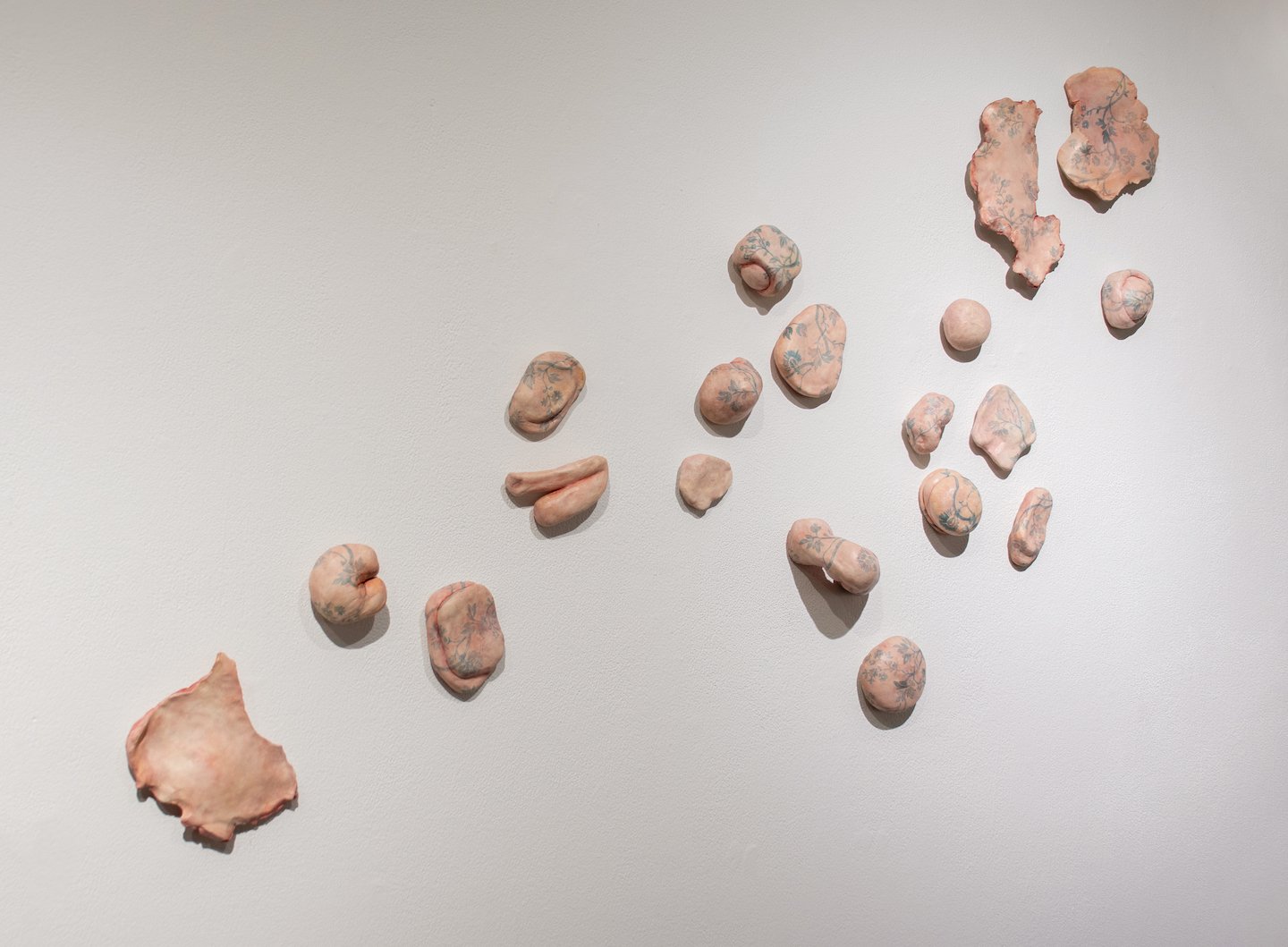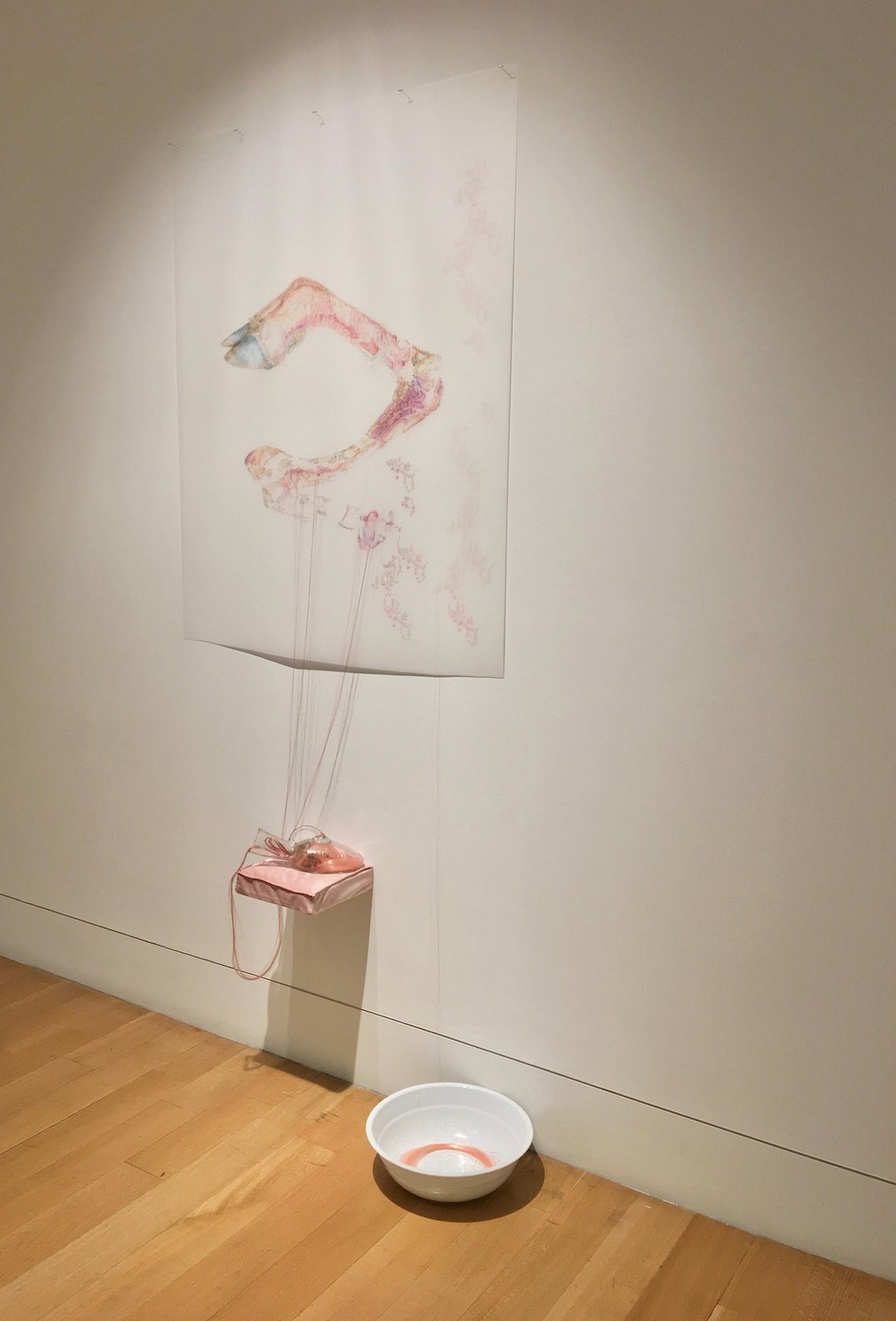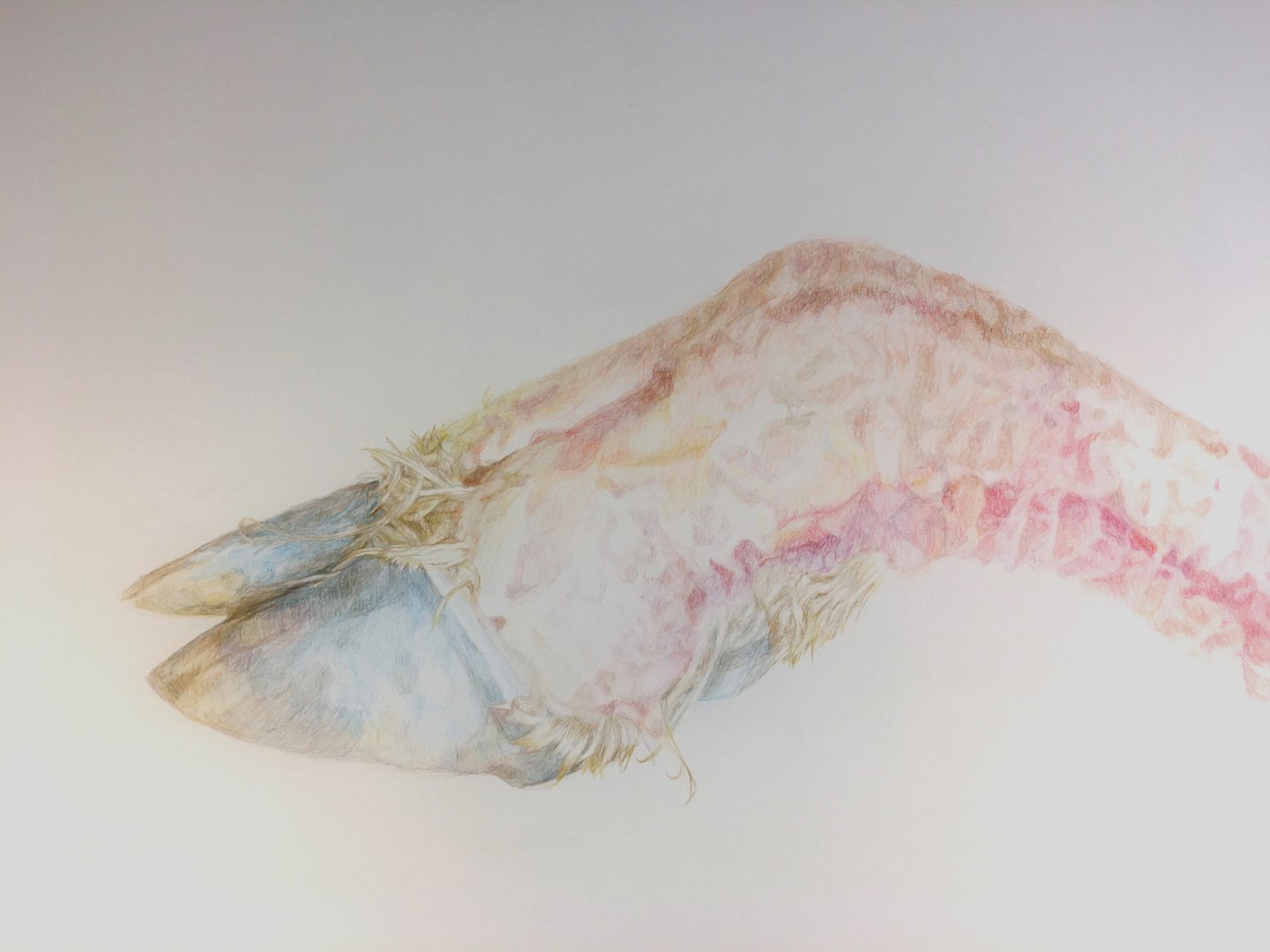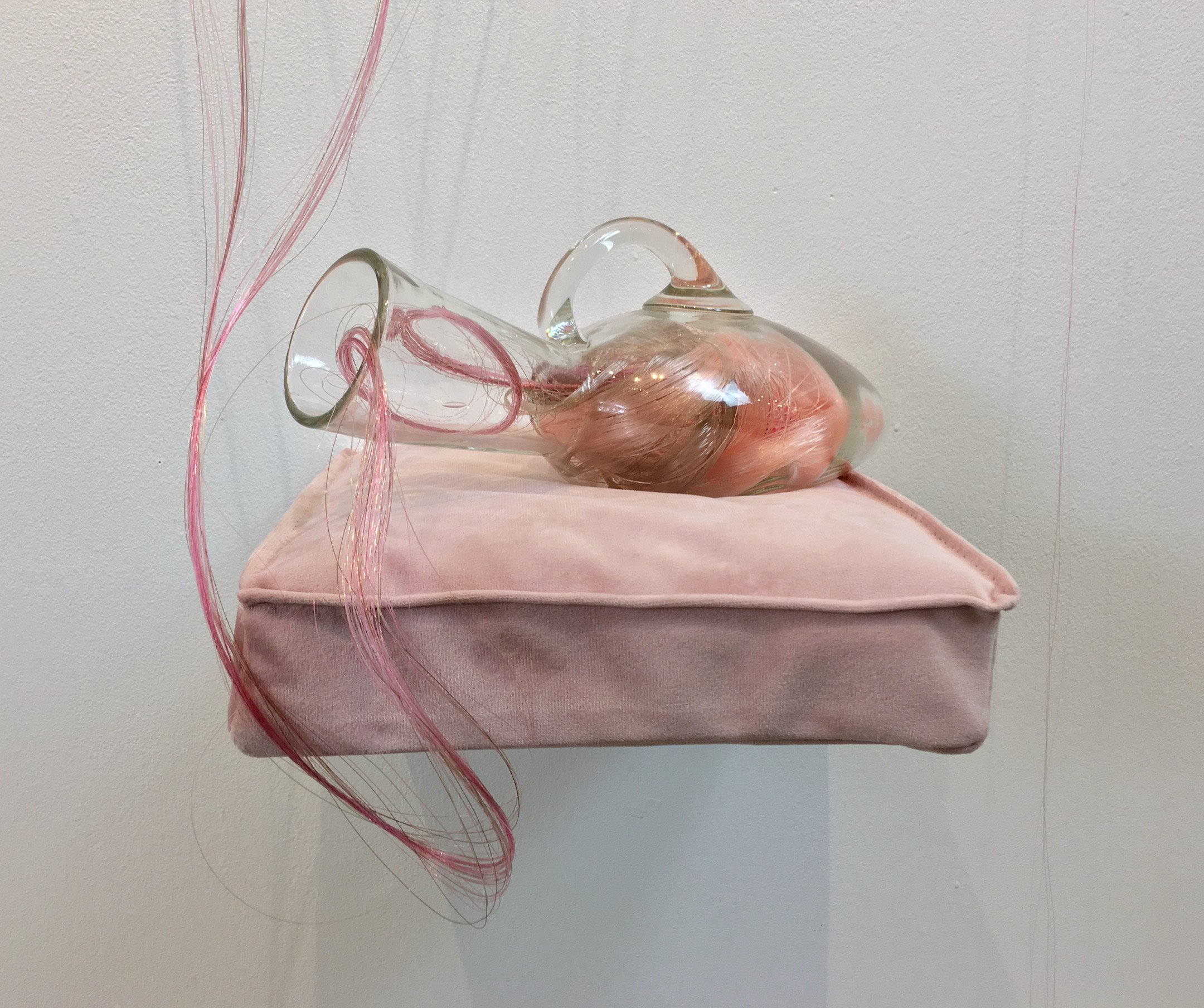Interview with artist Anne Greenwood
Living in the beautiful Hot Springs area, Anne Greenwood developed a curiosity and love of the natural world that she now constructs and deconstructs in her studio. The results are wonderfully detailed renderings that explore how the natural world co-exists with humans. Anne’s work has been exhibited widely and was chosen for the 2016 Delta Exhibition. More of Anne’s work can be found at her website agreenwoood.com.
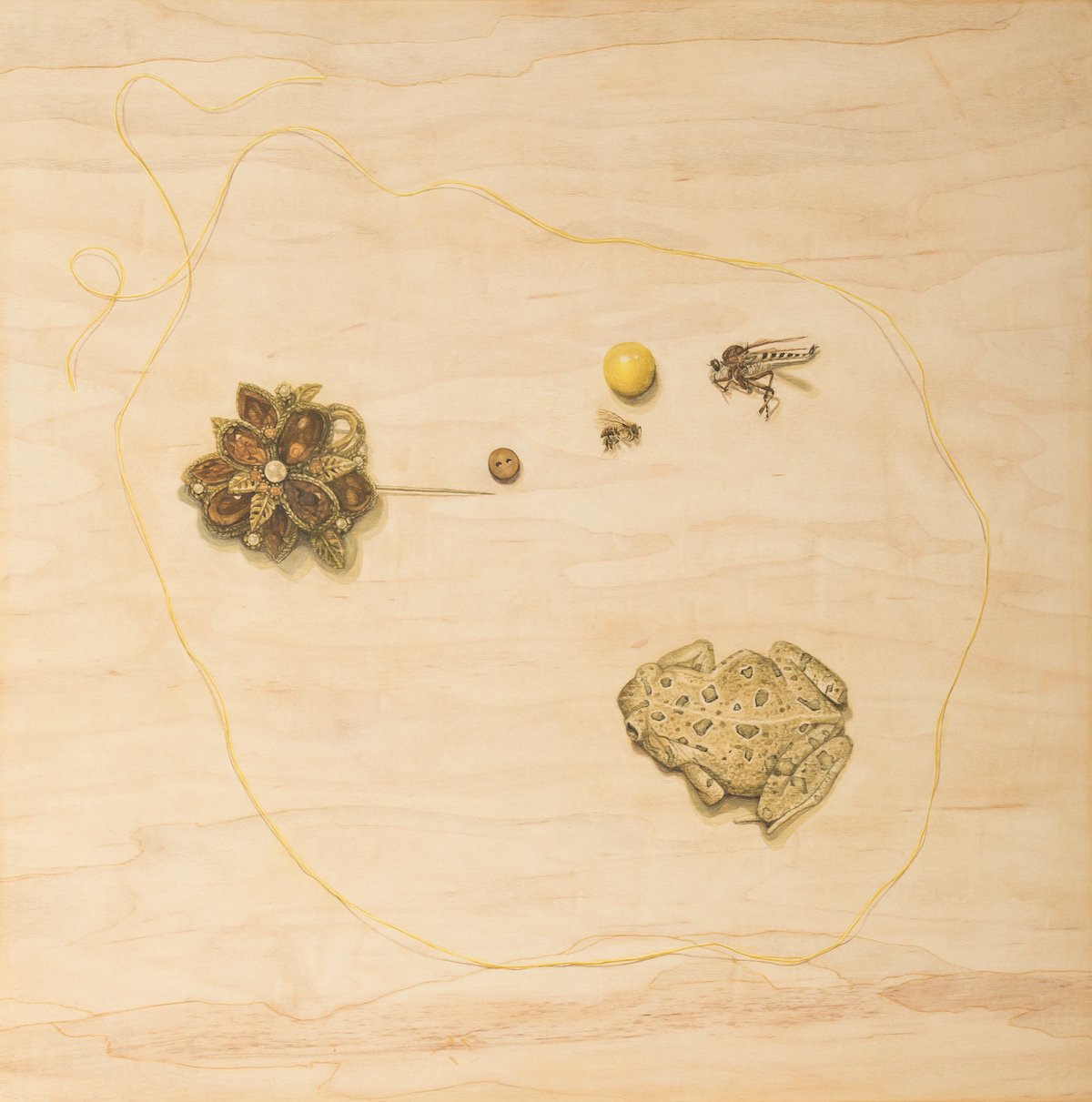
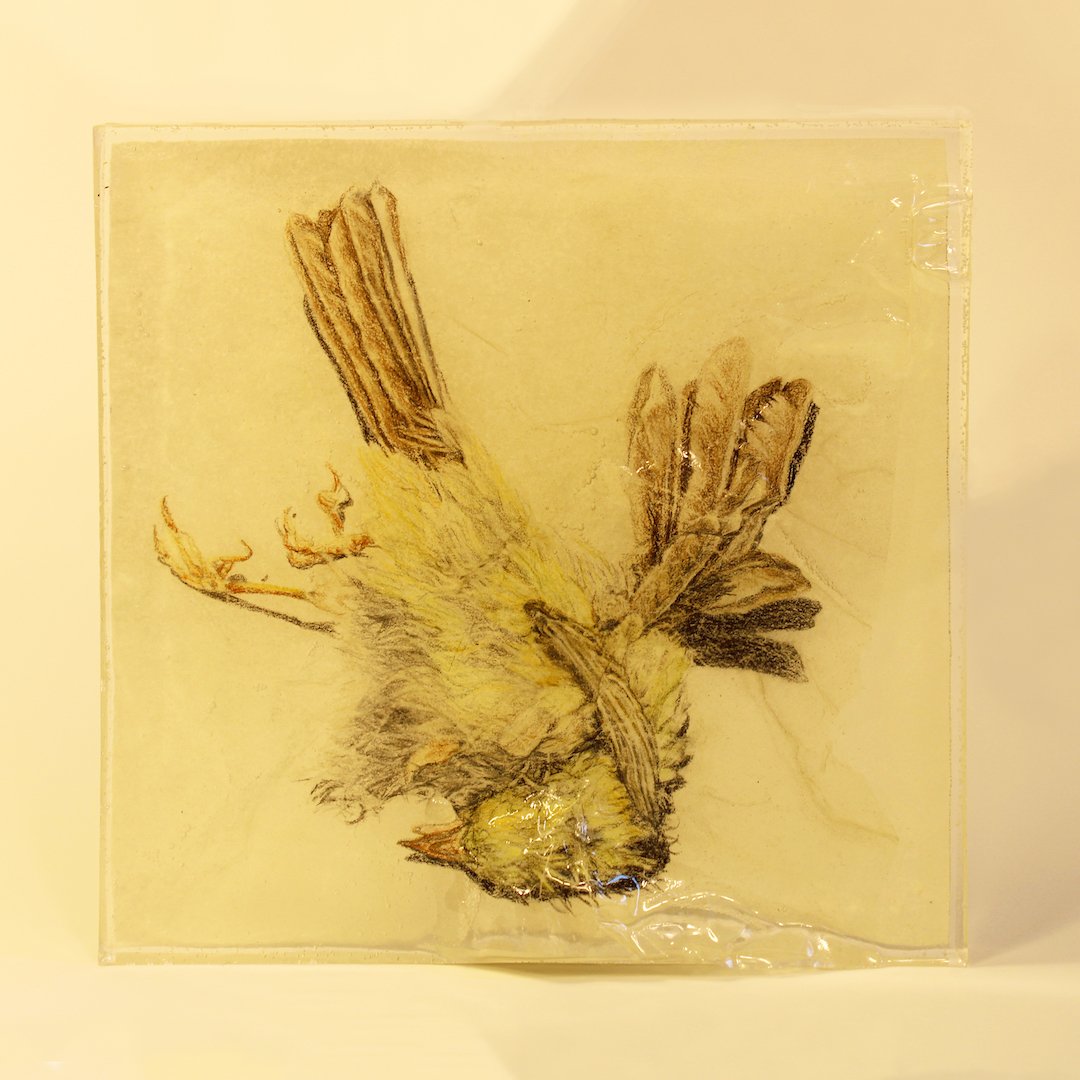
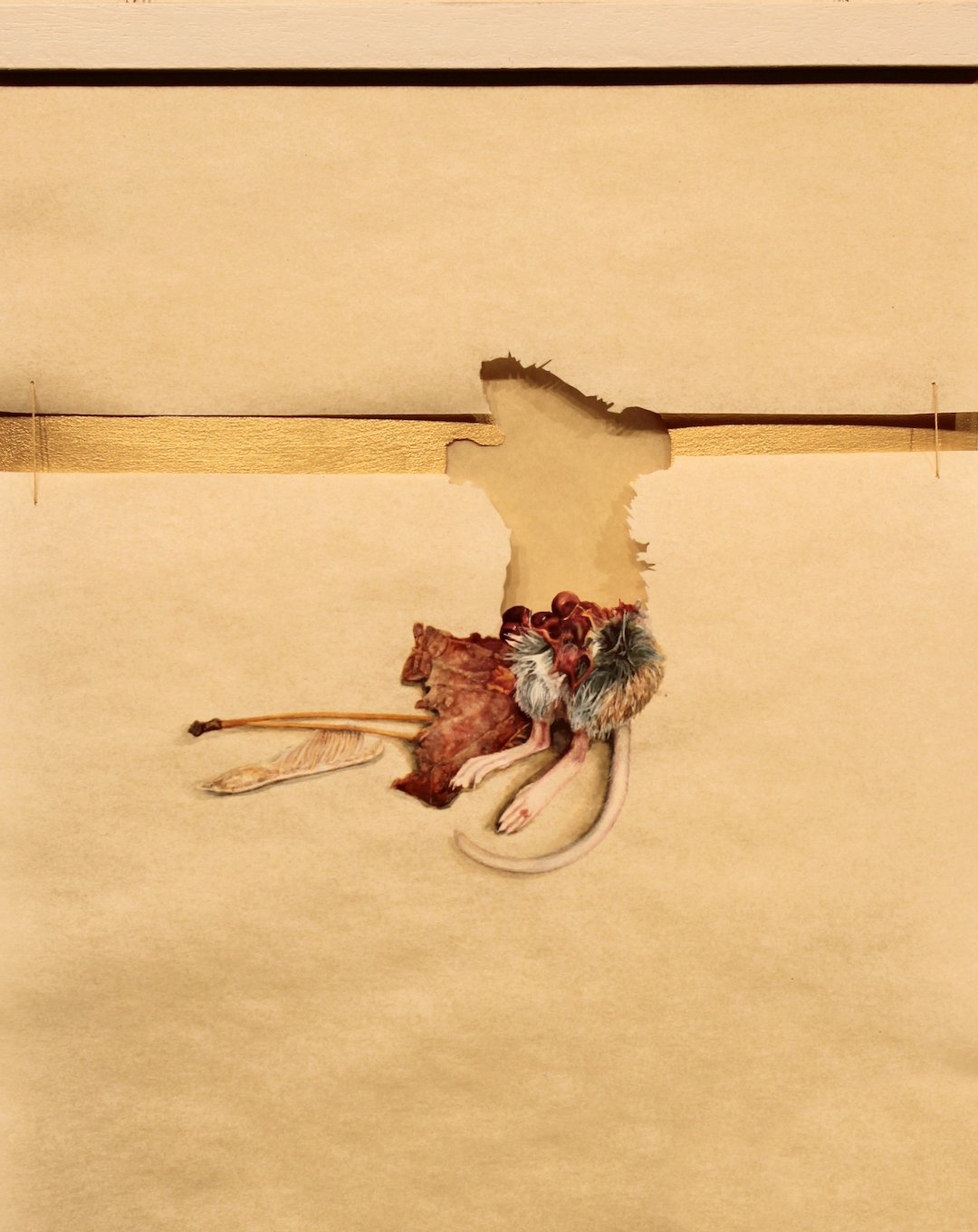
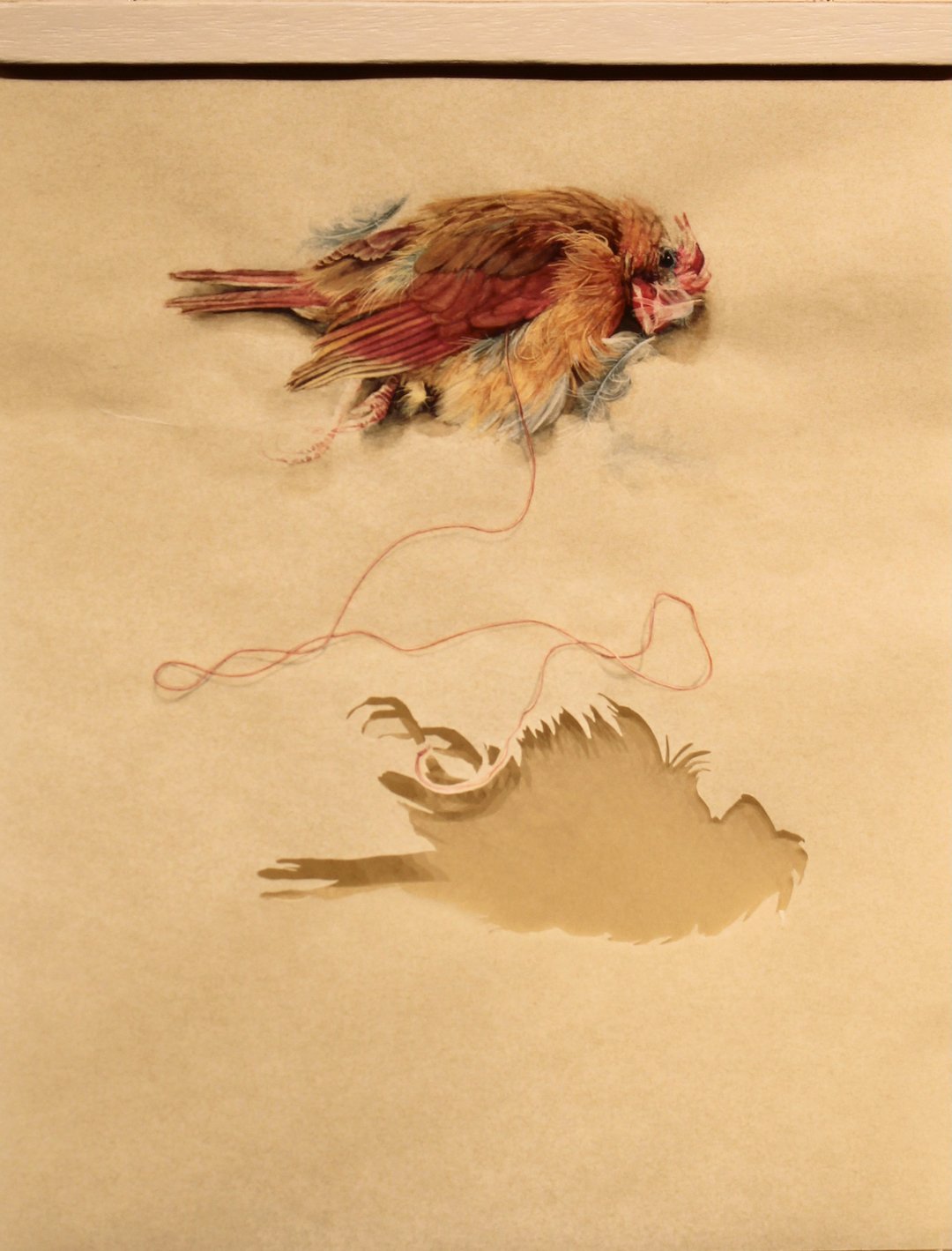
AAS: Anne, are you originally from Arkansas?
AG: I was born and grew up in Fayetteville, Arkansas, where I did my undergraduate work as well as a Master’s in English Literature. After several years teaching writing and literature, I decided to go back to school in studio art, taking a few classes at the University of Arkansas at Little Rock and then attending graduate school at the Pennsylvania Academy of Fine Art in Philadelphia.
AAS: As a kid growing up, was art something you were always interested in?
AG: When I was young, say, grade-school age, I wanted to be a zoologist. It occurs to me now that I will have to change my online security questions, as one of them is “What did you want to be when you grew up?” and I’ve just given away the answer! Anyway, when I was young, I learned the word “zoologist” describes someone who likes to study animals, and that sounded about right.
I always liked to make things and took as many art classes as I could. I was also a nerdy, bookish child who spent a lot of my happiest times in the library. I have vivid memories of the Root school library where I would read — the library had lots of light, lots of glass bricks, and there were African violets in pots all over. I loved looking over the plants and reading about animals and plants.
There were lots of people who encouraged me in art— my parents and my teachers. I was very lucky that way. I don’t know if I had a particular role model. My parents love and collect art, and I went to a lot of museums growing up. They are still taking me to museums — we went most recently to the Alice Neel retrospective at the Metropolitan Museum.
When I was lucky enough to go on one of those whirlwind trips to Europe in 9th grade, Erin Chapman, one of my teachers, kept finding art exhibits in the cities we visited that weren’t on the official tour. We saw Hieronymus Bosch and an exhibit of Picasso’s drawings. The idea that life is more interesting if you seek out the art around you was fortunately part of my early life.
AAS: You were a member of the adjunct faculty at Henderson State University, Department of Art for a number of years. Now the programs in Studio Art and Art Education have, sadly, been cut? What did you like most about teaching there?
AG: Working at Henderson has been wonderful. I can’t say enough good things about the colleagues I had and have there, and I have to thank Kathy Strause for bringing me on board. That art department was a special place — its intimacy allowed students to have the kind of time and attention that often is only available at expensive private art schools. I’m quite sad that it will not be around in the future. I am currently teaching there part time and on a temporary basis. As most of the faculty have fortunately found other positions, I’m filling in for a couple semesters to tide over students who have not transferred.
One of the strange things in higher education is that cutting the arts almost never happens at flagship institutions. Those institutions know that having arts is integral to offering a quality education, a quality campus life, and to society at large. Cutting such programs seems tantamount to suggesting that the student body on a particular campus doesn’t deserve the same quality of education or opportunity. Being from Arkansas, I think people throughout this state deserve access to arts just as much as people in Massachusetts, Connecticut, or California.
I deeply enjoy teaching, so I hope it will be something I continue to do the rest of my life. When my students understand something, or have an ‘aha’ moment, I get goose bumps. Then, I show them the goose bumps and get foolishly excited. That kind of physical response is an undeniable sign. I am fortunate to continue teaching part time at National Park College in Hot Springs and they have a healthy and thriving arts program with wonderful faculty. One that looks like it will continue well into the future.
AAS: The first time I saw your work in person was at your recent show at Historic Arkansas Museum. What was it like seeing your work hanging in that special place?
AG: Working with Historic Art Museum and particularly Carey Voss has been such a pleasure! Carey contacted me a while ago about a show after my work was in the Delta Show. I couldn’t tackle a show at the time, as I was in grad school and my husband had contracted cancer. So, in 2019 when I graduated and my husband was in remission, I contacted her and we opted for a show that year. Then, Covid shut everything down, and it was 2022 before it happened. Carey came to do a studio visit before that, and I loved everything about her! She does this wonderful artwork based in nature and tackling themes of death, so we had so many interesting interests. I have such a curator crush on her!
AAS: Your work is narrative, as in Nature Is a Haunted House, which was your thesis exhibition. Talk about your thesis and A Small Piece of Turf.
A Small Piece of Turf, 8’ x 4’ x 2’, watercolor, colored pencil, gesso, dura-lar, grass plant in resin, table
AG: A Small Piece of Turf came out of two and a half years of intensive and transformational work at Pennsylvania Academy of Fine Art’s Low-Residency MFA program. Particularly, Alexis Granwell’s mixed media and installation class which encouraged me to integrate three-dimensional form into my work. In addition, it developed from theoretical work with David Dempewolf and Kevin Richards researching for the written portion of the thesis.
This research gave me a chance to investigate New Animism, New Materialism, the concept of becoming animal, and the reworking of anthropomorphism. Each of these are philosophical explorations of the human efforts to understand non-human beings. It’s the effort itself which fascinates me. That effort can be through individual encounters with what Donna Haraway calls our kinship relations to other beings (think of your dog or cat). It comes from trying to see other beings as having a kind of resonance or secular soul as in David Abram’s writings on New Animism. It can come through traditional and past scientific understanding or via acknowledging our porous selves as we are affected by nature and matter — evident in Jane Bennett’s New Materialist writing. I’m not sure I fit in any of these camps of thought completely — my view is a mishmash of them. But what captures me is our attempts, over and over, to know these non-human beings. This is what, ultimately, fascinates me. In this sense, my work is also about humans, even though I don’t present human forms in the work — it is more about a human endeavor to know the animals or plants whose forms fill the works.
At the same time as I was completing the research, the mixed media and installation class really opened up my thoughts about representation, and I began to think a lot about how and why we make representations. In A Small Piece of Turf, I am thinking about what it means to try to know something via artistic endeavor. What does it mean to paint it versus to capture it in resin? What is the painting doing that the embedded resin is not and vise-versa? They are both echoes of the actual thing — the living grass plant — and both are an attempt to know it, to record it in a way.
AAS: The Aviary series is a charming series on your theme of birds co-existing with humans. Aesop’s Fable and Grackle are two of my favorites.
AG: I did these pieces quite a while ago, and they were the first works where I felt I was working in my own voice instead of doing my version of someone else’s work. Birds are such heavily symbolic animals in our culture. They have to carry all the weight of being symbols of flight and hope, omens and dreams, associated with holidays and patriotism. I wondered what they would do in their off time, when they were not busy with all that freighted work, possibly hanging out in domestic spaces, engaging in lighter, more humorous versions of these roles.
It also was compelling to imagine them not in the Dutch still life or hunting painting traditions, but as part of the domestic nostalgia of the 20th century. Grackle envisions a grackle atop a ceramic Christmas elf — the type of kitschy figurine you see from early and mid-century decorations. Somehow, it seemed right for the mostly plain, chatty grackle to pair up with this figurine, as if the bird were taking a vacation from being a blackbird with all the associations of blackbirds as melancholy or morose. Aesop’s Fable re-imagines a bird looking over a mid-century orange juice pitcher echoing back to the Aesop’s fable of the crow who fills a pitcher with pebbles. I like to think that the bird in the painting is relieved from being a symbol for intelligence and wisdom in problem solving, at least for the moment, and left just pondering a closed, empty pitcher.
Aesop’s Fable, 14” x 14”, oil on board
Grackle, 14” x 14”, oil on board
AAS: Your skill as an illustrator and painter is remarkable. Black Headed Grosbeak is a marvelous piece. Tell me about it and your Synanthropes series.
Black Headed Grosbeak, 14” x 11”, watercolor on pergamenata, tissue
AG: Thank you for the compliment! I learned so much about drawing from Ken Stout at the University of Arkansas and from Heidi Hogden who is now at Arizona State, and about painting from Kristin Musgnug at U of A and Renée Foulks at PAFA. I am deeply grateful to have had such wonderful mentors.
For Grosbeak, I did a few sketches from the dead animal where I found it and took reference photographs to work from later. The piece is done in watercolor, using an old technique that is akin to that used in illustrations from natural history. The cut-out sections are a way of initiating absence into the work. This is an image of a dead bird, and so conjuring both presence and absence seemed important.
In thinking about this piece, Grosbeak, I should at some point talk about death— or the fact that many of the animals in my works are dead. I have a good friend who says I should have cards printed which read: “Hello, my name is Anne Greenwood. I draw dead things.” I keep thinking I should do that, perhaps in gold embossed letters. It would be a great shorthand description of my work.
If, like me, you were fortunate enough to wander around in the woods as a child, or do so now as an adult, you’ve encountered dead animals. If you’ve driven along roads, there are dead animals. Dead animals or birds or insects are a part of life and also a reminder of our mortality. The experience of a dead animal exists at a nexus of memento mori and the desire to know. That’s a sweet spot for me. I’m grateful that friends now contact me if they find a dead creature to see if I want to use it in my work.
Synanthropes are animals who survive well living next to humans but are not domesticated. Raccoons and crows are consummate synanthropes. There’s been a recent resurgence of interest in urban wildlife, and I find that I’m drawn to that. It’s particularly fascinating for me as I live in downtown Hot Springs and at the same time at the edge of the wooded national park land. So, it’s natural for me to focus on the animals and plants that live near me in what’s known as the “wildland-urban interface.” I want to honor and explore the creatures in my immediate wild environment, and this series grew out of that desire.
AAS: Your series, Personal Natural Histories, is fascinating, especially Stag Beetle Specimen. The compositions remind me of what one might find after dumping out a 5-year-old’s pocket. Are they somewhat of a memory offloading for you?
Stag Beetle Specimen, 16” x 16”, watercolor on wood panel
AG: I don’t have a specific memory that’s at work here. These pieces do integrate some of my grandmother’s jewelry with insects and items I collect. They definitely evoke the treasures a child would select — that core part of us which is attracted to a certain pebble or a color of yellow or a shiny beetle carapace. They don’t have any logical relationship to one another but are full of the inarticulate desire which causes us to collect things.
Stag beetles have long been collected as specimens because of their impressive saw-like mandibles. They also have something of a history of being painted: there’s a famous stag beetle painting by Albrecht Dürer. Other early naturalist artists such has Maria Sibylla Merian and Alexander Marshal painted them, as do contemporary artists. There are even contemporary paintings done by the stag beetles themselves where paint brushes are positioned between their mandibles – you can watch them at it on youtube. I have a passion for the history of natural history, so a stag beetle painting was part of a tradition I wanted to join.
AAS: Is attention to detail, like in your work, something you carry with you in your everyday life?
AG: Ha! Yes. I sometimes wish I could turn it off, as I’d like not to see the messes in my house in quite so much detail. I should correct myself and say I pay attention to some details. In many respects, I think we see what we look for. When my husband and I drive somewhere, I remember the animals and some of the plants I see on the drive, but I can’t for the life of me remember the make or model of the truck we were stuck behind for miles. I’ve failed to notice it.
In my drawing and painting, I am a detail geek. I love to get lost in rendering the details. In a drawing class, I can spot the other detail geeks: they are the ones who are excited about the prospect of tackling complex rendering problems such as feathers or fur. The idea that I can make a two-dimensional surface seem three-dimensional still seems a bit magical to me. In addition, there’s also something especially satisfying about sustained looking; it’s a form of meditation on the thing you are observing.
AAS: In your most recent body of work, the Preservation Series, you take your theme to the next (final) level – when the natural world will only exist in repositories. Tell me about that series and Preservation of Lichen and Preservation of Indigo Bunting.
AG: I very much like the idea that these works are repositories. The Preservation Series is quite new, and I’m still feeling it out. To some degree, I think the Preservation works grew out of the post-apocalyptic fictions that have come out of the pandemic — these pieces are a kind of speculative fiction about the future.
If we preserve a specimen, what is the purpose of that? What are we hoping it will accomplish? Is it for the purposes of studying it? Or, if we lose that species, we will have a good reference? What if we preserve a drawing of a specimen? Are we just preserving the artist’s experience? All those questions are part of making these pieces.
These works are done in colored pencil, a medium common in drawings of specimens. Yet they are executed on tissue paper which is fragile, and which becomes translucent in the resin, as if they are partially dissolved. So, there’s the attempt to preserve something fragile happening at the same time as the method of preservation renders it inaccessible.
Preservation of Lichen, 6” x 6” x 1”, colored pencil on tissue with acrylic paint suspended in resin
Preservation of Indigo Bunting, 6” x 6” x 3”, colored pencil on tissue with acrylic paint suspended in resin
AAS: Anne what can we expect next from you?
AG: Whew. What a question! I honestly don’t know. I hope to continue making work and poking dead things and encountering animals and plants. I’ve bought a small teardrop camper, and I have expectations of myself that I will visit some national parks in the next few years — to draw and paint from those places and to expand the nature I experience. I’ve never been to the Pacific Northwest, and I feel that I should probably try to see the redwoods sooner as opposed to later. I hope that these experiences will fill feed my work and my soul.
